World pork production and trade keep expanding
In 2016 the United States exported 21% of our pork production and an even higher percentage of pork byproducts. Pork imports equaled 4.4% of 2016 production.
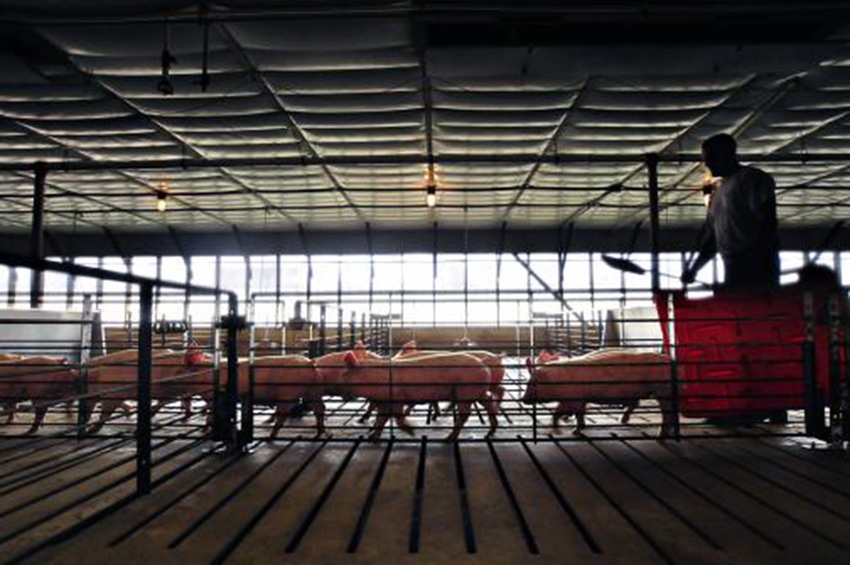
Pork exports are a big component in the value of hogs. Last year the United States exported $1.6 billion of pork and pork variety meats. That equaled $50.26 in exports for each hog slaughtered. In 2016 the United States exported 21% of our pork production and an even higher percentage of pork byproducts. Pork imports equaled 4.4% of 2016 production.
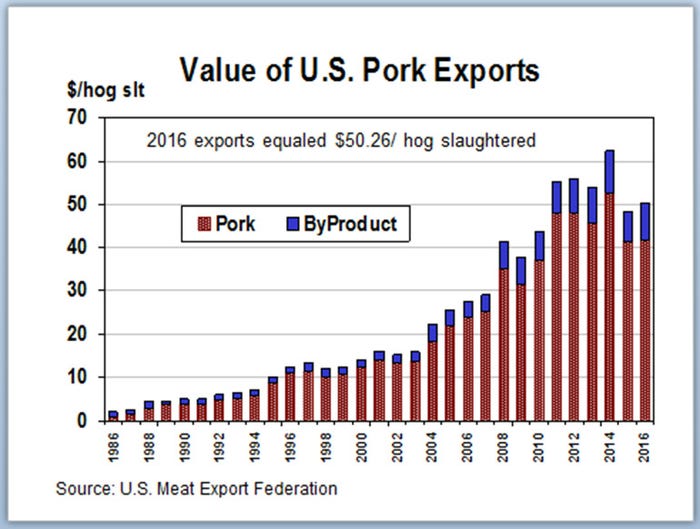
Exports are predicted to expand this year and imports are expected to decline. During the first two months of 2017 pork exports were up 18% with Mexico, South Korea, Japan and Colombia taking most of the increase. U.S. pork imports were down 14% in January and February due mostly to less pork coming south from Canada. The combination of more pork exports and fewer pork imports in 2017 is not adequate to match increased production. The U.S. per capita pork supply is expected to be 0.7 pounds more than in 2016.
USDA’s Foreign Agricultural Service’s semi-annual publication “Livestock and Poultry: World Markets and Trade” predicts 2017 world pork production will be a record 110.196 million metric tons. That is 0.8% more than last year and 0.1% more than the record set in 2014. Over the last five years, world pork production has increased by 3.854 million mt. U.S. pork production has grown the most, up 1.290 million mt. The European Union increased pork production by 924,000 mt and Russia’s production was up 825,000 mt compared to five years ago. Vietnam’s production increased by 443,000 mt.
During this five-year period Chinese pork production declined by 677,000 mt. Economic prosperity has driven up meat demand in China, and they have increasingly relied on imports to meet the growing demand. China is expected to account for 47.6% of world pork production this year. The United States will produce 10.7% of world pork according to USDA forecasts.
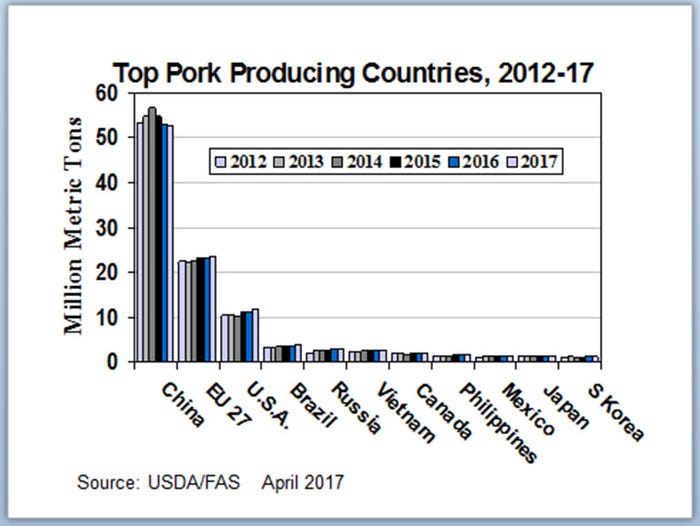
The amount of pork moving in international trade keeps increasing. USDA is forecasting 8.75 million mt of pork will move between countries in 2017. That is up 5.2% from the record set last year, and more than double the level of pork trade in 2003.
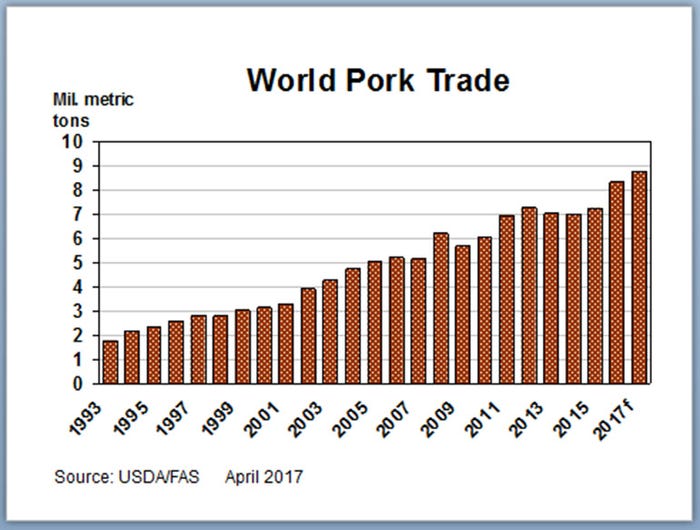
From 2005 to 2014, the United States was the world’s largest pork exporter. Since then the European Union has been the export leader. Most of the increase in 2016 E.U. pork exports has gone to China. Combined, the European Union, United States, Canada and Brazil account for nearly 92% of world pork exports.

For more than 20 years Japan was the largest pork importing nation. A doubling in imports by China last year has made that country the new No. 1 pork importer. The United States ranks fifth in pork imports after China, Japan, Mexico and South Korea. Russia was a major pork importer until 2013 when their government decided to severely restrict imports from the United States and the European Union. China and Mexico are forecast to take two-thirds of the year-over-year increase in pork imports.
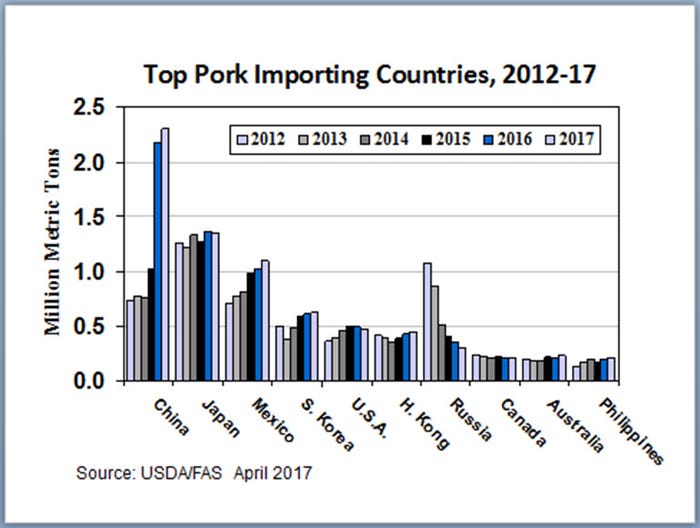
The United States is by far the largest importer of live hogs and Canada is the leading exporter. In 2016, 7.6 million hogs moved between countries (not counting shipments within the European Union). Of these hogs, 5.7 million were exported from Canada and 5.7 million were imported by the United States. In 2016, the United States also imported 63 live hogs from Europe. USDA expects U.S. hog imports to increase 1.7% this year over last.
About the Author(s)
You May Also Like





